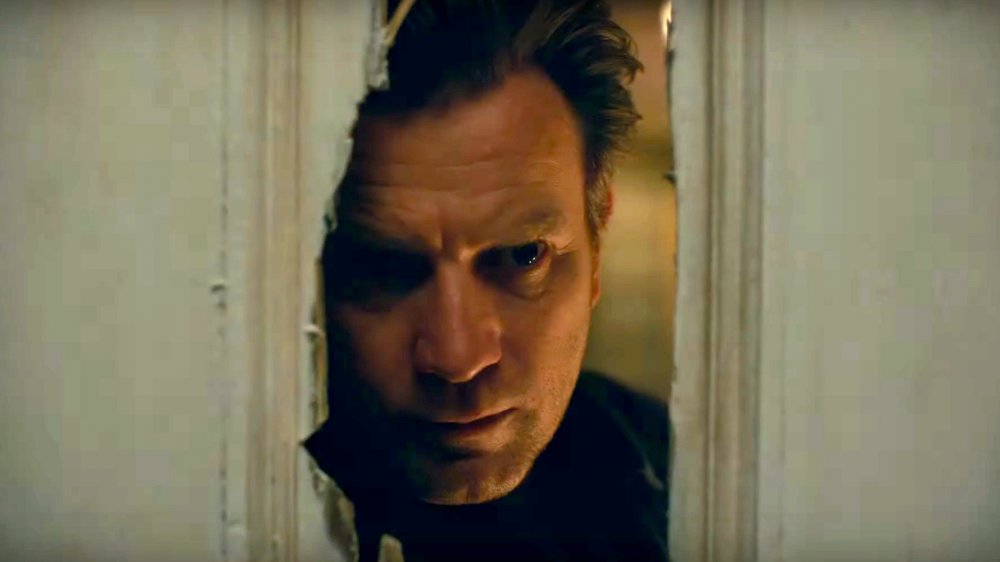Dr. Sleep tells the story of grown up Danny Torrance (Ewan McGregor) as he moves to a new town, looking to run away from himself, as he’s become an alcoholic and is still haunted by his experiences as a child. Thanks to the compassion of a local townsperson, he begins to recover from his alcoholism and begins to use his ability to shine. He uses this as a supernatural sense that allows him to see the dead and communicate with his mind) to comfort the elderly who are about to die (giving him the nickname Dr. Sleep). At the same time, a gang of vampire-like creatures who eat people’s ability to shine is discovered by Abra (Kyliegh Curran), a girl with similar shine abilities to Danny. Wanting to stop them, Abra seeks out Danny for help.
It is the restraint that took me by surprise on my viewing of this film. The plot of Dr. Sleep is fairly removed from the story of The Shining. The supernatural elements in the original films were limited to ghosts and the ability to shine. So this new threat of these “vampires” creates an antagonist that is seperate from the Overlook Hotel (the location and central threat of The Shining). And while there is a ghost from The Shining referenced at multiple points in the film (the woman from the infamous room 237), she is used to get across a thematic idea central to the story. She represents the trauma Danny went through in The Shining. The horror he saw left a mark on him that he never fully recovered from. The only way he was able to cope with the “ghosts” of the Overlook Hotel was to lock them in boxes within his mind. This reference isn’t there to simply remind you of The Shining, but is making a statement about the trauma Danny has experienced since childhood. It is used as a benchmark for how both Danny and Abra handle the hardships they face, as each must eventually face her.
Spoilers ahead.
It isn’t until the third act of the film that the Overlook Hotel becomes a part of the story. In order to confront Rose (Rebecca Fergusen), the leader of the band of vampires, they need to overwhelm her with the Overlook Hotel, as he was in The Shining. This is where a lot of referencing and homages occur. Danny and Abra’s ascent up the mountains to the Overlook Hotel is similarly shot as the opening of The Shining as the iconic main theme of The Shining plays. As Danny goes through the hotel to “wake it up”, it acts as a sort of haunted walk down memory lane, as each room is directly from The Shining. This is able to work as we had experienced the horrors that alluded to by watching The Shining, having experienced the horror of Jack Torrence (Jack Nicholson) breaking down the bathroom door, so when we see the crack through the door, it feels like an old memory, because it is to the audience, putting us in Danny’s shoes.
| | |
The purpose of the callbacks in Dr. Sleep doesn't simply remind you of The Shining, giving you empty nostalgia. It seeks to use the original film to explore the idea of trauma through the shared experience of a character and an audience. The film uses references to inform the development of Danny Torrence and allow for a new story to be told while incorporating references where it says something about the characters and their development. It isn’t a crutch to rely on, but a tool to effectively tell its story.




 RSS Feed
RSS Feed
